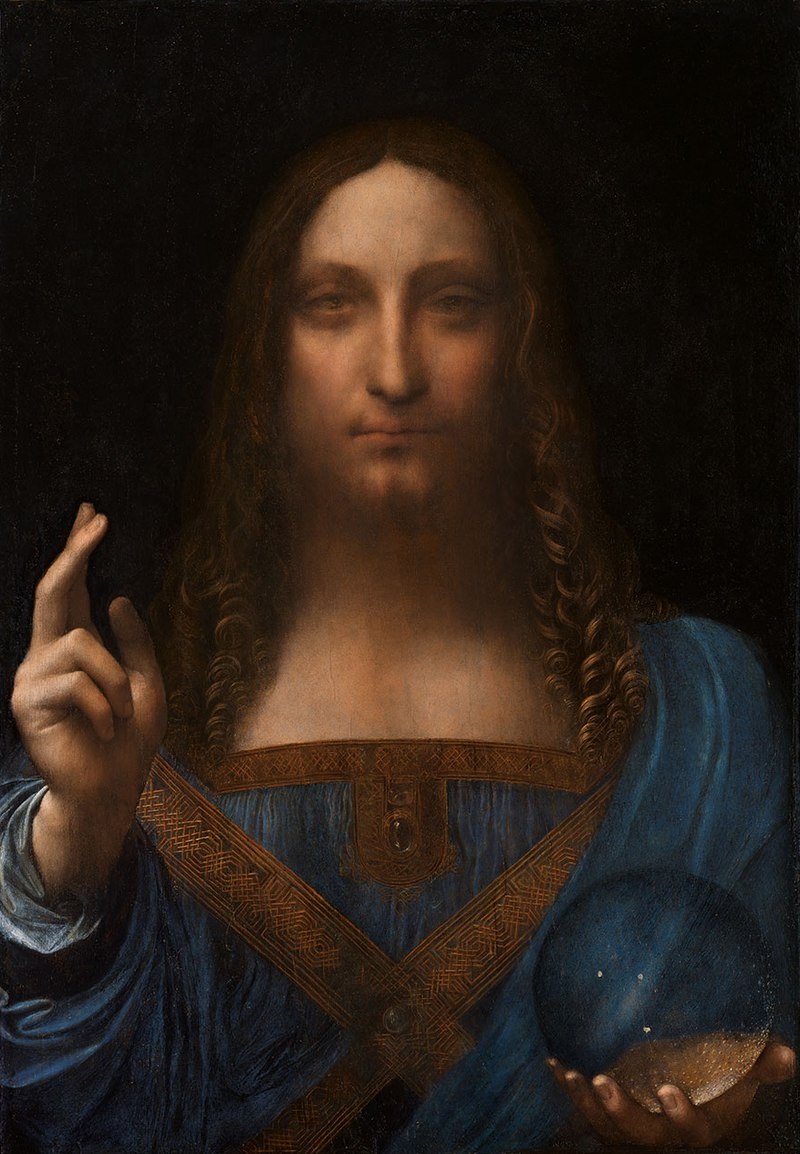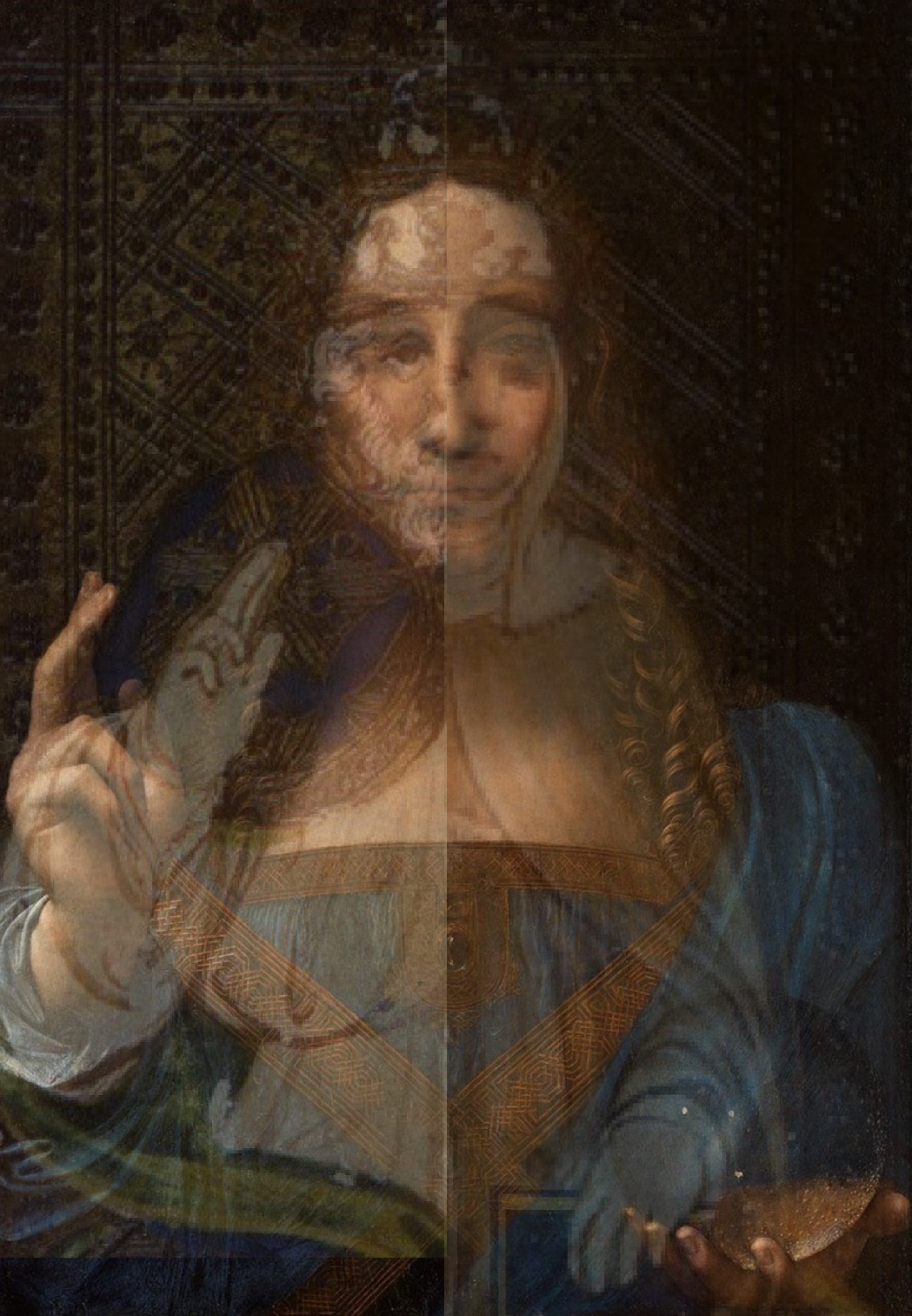I haven’t reviewed a painting in a long time… Not since art school I’m positive, but looking at the latest Di Vinci painting to hit the market a few things caught my attention. Not that it was a fake or that the orb was a mistake. Leonardo Di Vinci made few mistakes but I have not seen the painting in real life either.
These are observations from a very far distance. Observations on what I see in a picture of the thing alone. Pretentious maybe, but interesting none the less and I wanted to share it on my site here.
This is the Salvator Mundi painting by Leonardo Di Vinci which has recently been led to auction after having been the only privately owned Di Vinci painting known to date.
Very lovely. The painting is supposed to represent Christ or the Savior of the World. In the 14th and 15th centuries this was a common theme for painters. Antonello da Messina has one from the mid 14th and Andrea Previtali has another from the early 15th. Both were Italian painters like Di Vinci.
I was drawn to the painting by the recent articles claiming it may be a fake due to the Orb in the palm of the right hand. According to critics, if it is a crystal orb it does not exhibit the techniques used to make the orb look more three dimensional. Techniques that Di Vinci was expert at.
I think, maybe it is not a crystal orb, symbolic of the world; but the moon and universe itself. Not a crystal clear orb, but a small cosmic landscape. Brown mountains against a dark blue sky smattered with a few stars… The ability to see inside the globe instead of how one thinks the globe should look.
The posture of the left side of the figure reminded me of a tarot card. Turns out it was the Hierophant card or the High Priest. I say the left side because after staring at the painting for a long while, it occurred to me that this painting was male and female. Two halves put together.
The right is clearly more feminine than the left right down to the smoothness of the cloth in her dress. The breast is more rounded and defined. The hair has tighter, neater ringlets. The fingers on the hand are smoother and more tapered. The face itself, though this all may be a product of restoration, over painting and cleaning, is visibly more feminine on the right side.
I believe she holds the moon. Which would make the orb, not a crystal orb but symbol of the moon.
Don’t call me crazy yet..
The first documented tarot packs were recorded between 1430 and 1450 in Milan, Ferrara and Bologna, Italy. One of these was the Cary-Yale Visconti Tarocchi deck created in the early 14th century.
The oldest known preserved tarot cards is the Visconti-Sforza deck from the mid 15th century. There were 15 decks created for the Visconti-Sforza family, the rulers of Milan, Italy.
Leonardo Di Vinci was born on April 15, 1452 and he died on May 2, 1519.
Born out of wedlock to a notary, Piero da Vinci, and a peasant woman, Caterina, in Vinci in the region of Florence, Leonardo was educated in the studio of the renowned Florentine painter Andrea del Verrocchio.
Much of his earlier working life was spent in the service of Ludovico il Moro in Milan. He later worked in Rome, Bologna and Venice, and he spent his last years in France at the home awarded to him by Francis I of France. Wikipedia
So the time is right. The place is right. I won’t pretend to know what it means or that it’s even right but if you lay half a tarot card over the Salvator and vice versa on the other side, there are key items that resemble each other. I’ve tried to create an example of this in the photo below.
Transparent photos of the tarot cards I’ve referred to were placed over the unedited photo of the Salvator Mundi painting.
If you look closely at the left side, you can see the same positioning of the Hierophant’s left arm, hand and fingers. The same posturing of the body. The dress and crown make up almost the same shapes as the body, face and head.
On the right, the High Priestess or the Papess (from the same deck as the Hierophant) holds a book in her right hand in a posture similar to the Salvator while her dress and crown resemble the paintings body, face and head as well.
In the original tarot card of the Papess (Cary-Yale Visconti Tarocchi) we see that she is holding a baby in her right arm and that it has a globular vessel it is drinking from. This imagery could be interpreted as being symbolic of the moon and the fertility and children it represented in medieval esoteric practices. Like reading tarot cards…
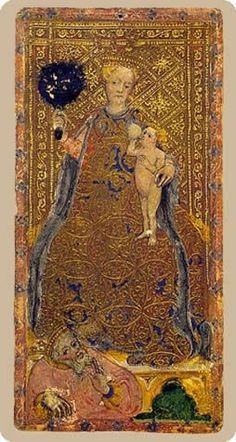
Here are the photos of the unedited cards:
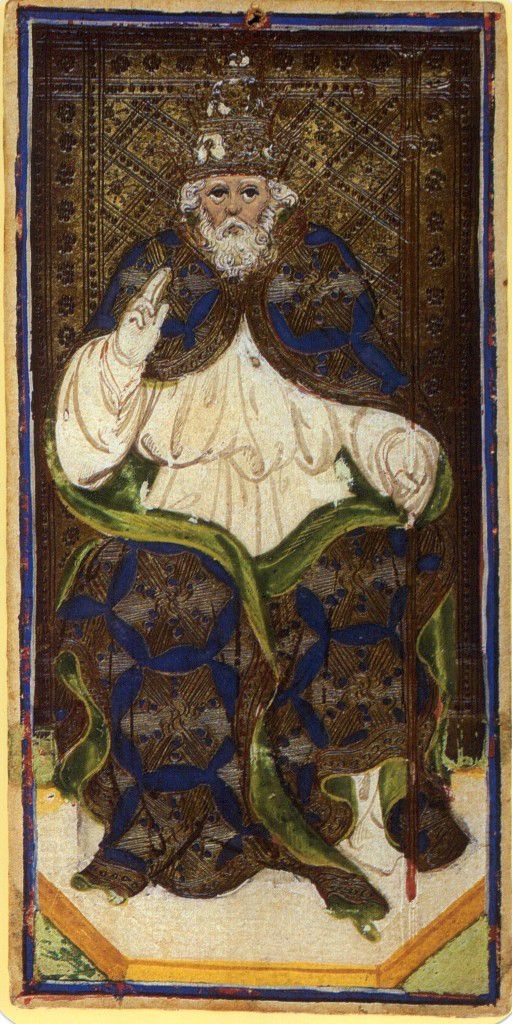
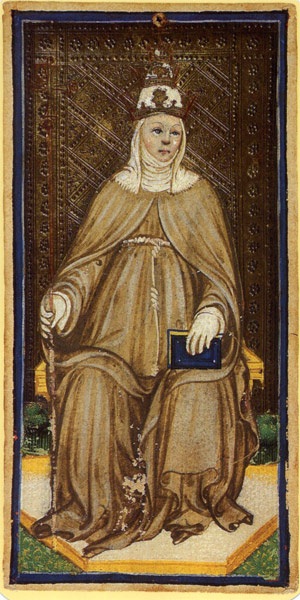
Who knows what it all may mean, but it certainly was an interesting process to this point.. Let’s hope the works of Di Vinci and others; will always be available for us (the public) to analyse, imagine over, and surmise possibilities about as long as they exist.
Thank you to those who make that possible.
